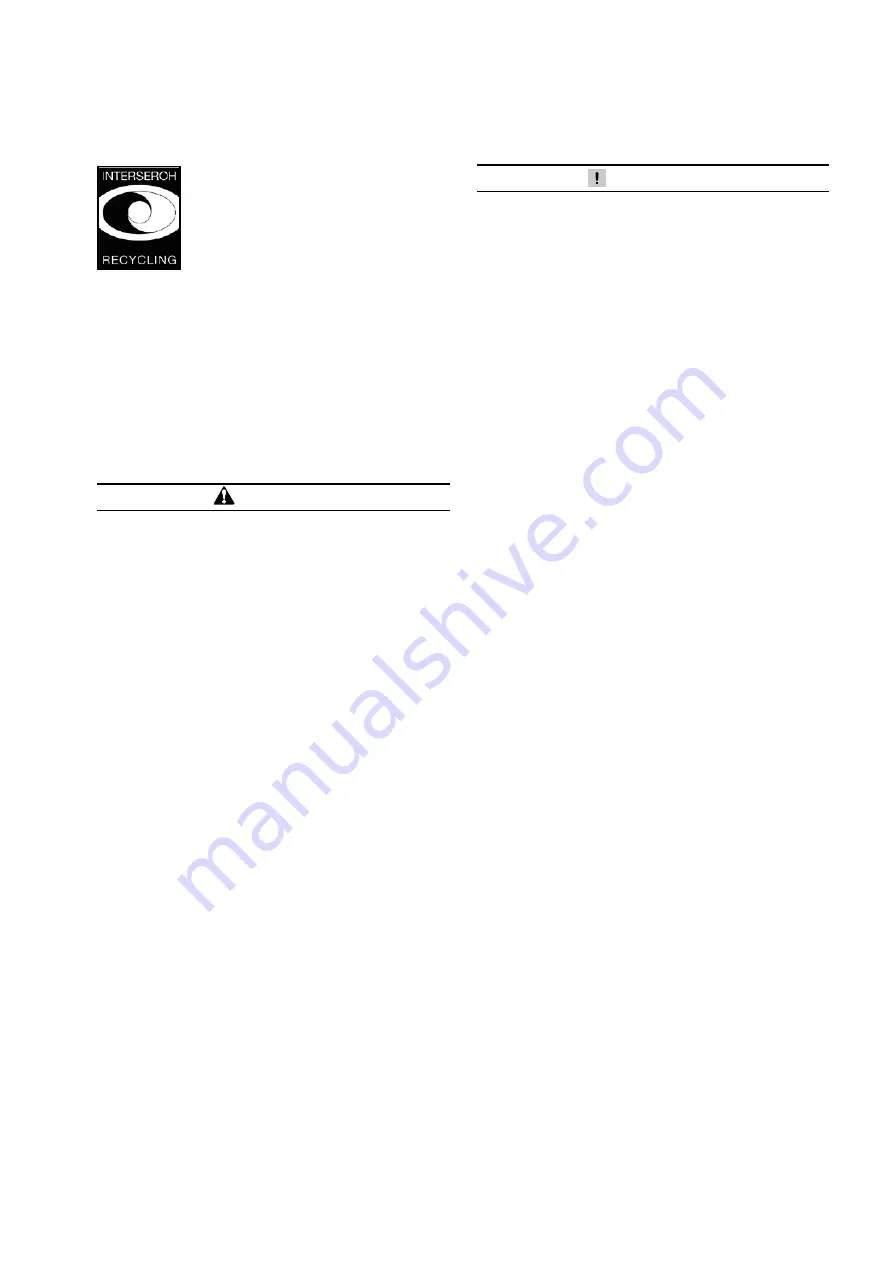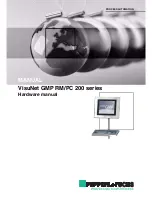
5
Mounting- and Operating Instruction CEAG DualGuard-S
40071860347 January 2020 www.ceag.de
1 Important Notes
INTERSEROH collection points are obliged
to dispose of CEAG packaging free of char-
ge.
Batterys and electrical components contain
materials that can result in injury to health
and to damage to the environment if they
are not disposed of properly. Please observe
national guidelines and regulations for the disposal of used
Batterys and electronic components!
1.8 Safety
At the time of its development and production, the device
was manufactured in accordance with the recognized rules
of engineering and is deemed to be operationally safe.
The device may prove hazardous, however, if used by per-
sonnel who have not been properly trained or if used in an
improper or inappropriate manner.
WARNING!
When planning to use lighting equipment with a DualGuard-S
system, first examine whether the electrical equipment in the
area intended for use is adequate. Special conditions (e.g.
potentially explosive atmospheres or areas with aggressive
atmospheres) require special facilities and installations.
Only use the equipment and associated component parts if
free of technical defects, taking into account:
• the safety and hazard information in the assembly and
operating instructions,
• the established operating and safety instructions for the
operator of the equipment,
• the installation and operating data provided in “3 Technical
Data” and the CEAG catalog “Emergency lighting and emer-
gency lighting systems”.
Malfunctions which could impair the function or safety of the
system must be reported immediately to the responsible
departments of the plant management and eliminated.
1.9 Intended Use
The DualGuard-S central battery system serves solely to
provide power, and to monitor and control the emergency
lighting system. Operations are steered by a program. Para-
meterization is carried out exclusively by specialist personnel
with specialized knowledge of the technical principles for the
assembly and operation of a lighting system.
Only use lighting that is either manufactured by CEAG or
which meets the standards and technical specifications
for emergency lighting. You can download the information
needed to assess conformity from our website.
Operational safety is guaranteed only if the systems are used
for the purpose intended.
DualGuard-S devices meet the requirements of EN62034,
“Automated testing systems for battery-operated safety
lighting,” and are classified as Typee PERC.
ATTENTION!
Any use that exceeds the purpose for which the equipment
was intended and/or any other Typee of use of the equipment
that differs from such purpose is prohibited and is deemed
improper use..
1.10 Contents of the Operating Manual
Any person charged with carrying out work on or with of the
system, the operating manual must be read before Start of
work on the battery read and understood have. This shall
also apply if the person concerned has been example has
already worked on similar batteries or has been trained by
the manufacturer.
Changes and conversions to the system
In order to avoid hazards and to secure the optimal perfor-
mance may be achieved at the central battery system no
changes, extensions or conversions have been carried out
which have not been expressly approved by the manufactu-
rer. have been approved.
Any costs incurred in connection with extensions, conversi-
ons, or repairs Work that is not described in these instructions
are specially trained technical and service personnel (of the
manufacturer CEAG or of sales and distribution authorised
by CEAG). service companies) reserved!
1.11 Modifying and Retrofitting the
Equipment
In order to avoid hazards and to ensure the best possible
performance, no modifications, retrofits and add-ons are
permitted to the central battery equipment except where
expressly approved by the manufacturer.
Work involving upgrades, modifications or maintenance that
is not described in this manual must be performed by trained
specialized service personnel
(from the manufacturer CEAG or sales and service firms
authorized by CEAG)!
1.12 Responsibility of the operator
Only authorized and trained electricians may work on and
with the device. The personnel must have been instructed
on any hazards that may occur.
Qualified personnel are defined as persons who are able to
assess the work assigned to them and recognize possible
hazards due to their specialist training, knowledge and ex-
perience as well as knowledge of the relevant regulations.
If the personnel do not have the necessary knowledge,
they must:
• the personnel have been properly and professionally in-
structed,
• Tasks and activities must be precisely defined and under-
stood,
• the activities are carried out under the supervision and
control of competent personnel.






































